Shop by Manufacturer...31 Inc.3D ProductsA-1 CouplingACME AutomotiveAcro Plastics Inc.Active ToolActive ToolsAllbrite Car CareAlligator VentilfabrikAllpart Supply - HawekaAME InternationalAmerican Forge & FoundryAmermac Inc.Amrep Inc.Aronson Mfg.Ascot Supply Corp.Associated EquipmentAstro PneumaticAteq USAAUTELB & J Rocket America Inc.Badac EquipmentBalcranck ProductsBartec USABattenfield Grease & OilBeicoBend-PakBlackJack Tire RepairBlasterBorg Equipment & SupplyBoss ManufacturingBrake Drum ToolBranick IndustriesBurke EnterpriseCalifornia Tool Co. Inc.CEMB USACEMB USA - BL Systems Inc.Central Tools, Inc.Challenger LiftsChannellock, Inc.Chicago PneumaticCliplight Inc.Cordova Safety ProductsCORGHI USACounteractCoxreels - Northern Tool EquipCPS ProductsCRC IndustriesCrushproof Tubing Co.Custom LeatherCraftDavenport EnterprisesDell Corning Corp.Delta First Corp.Dexter-Russell, Inc.Dill Air ControlsDixon TiconderogaDual DynamicsDuallyvalveDuro Manufacturing, Inc.
EATON - Hansen CouplingElrick Industries Inc.Elwood Corp.ESCO - Equipment Supply Co.Everhard ProductsExcalibur Wheel AccessoriesExten, Inc.Fejes ToolsFreylubeGaither Tool Co.Gardner DenverGator Corp.Gojo Industries, Inc.Great Lakes PartsGrey Pneumatic Corp.H.L. BoutonHALTEC CorporationHardwareHein-Werner AutomotiveHennessy Ind. AMMCO/COATSHofmann Corporation - Snap-OnHosetract IndustriesHunter Engineering Co.Ideal Heated Knives, Inc.Imperial Western ProductsIngalls Engineering Co.Ingersoll-RandInstant Tools Inc.International Marketing, Inc.ISN - Integrated Supply Networ..Jackco Transnational IncJET ToolsJohnDow IndustriesJTM Products, Inc.K-Tool InternationalKen-ToolKex Tire RepairKTB Products Corp.LA-CO / Markal Co.Laitner Brush Co.Levin's Auto SupplyLincoln IndustrialLiquiTubeLisle CorporationLock Technology - LTILoomis Root Inc.M.L. Bernie Co.MAHLE Industries, Inc.Maken Material HandlingMartins IndustriesMaster PneumaticMcCourt Marketing GroupMechanix Wear Inc.MEDCO CorporationMilton Industries, INC.
 Milwaukee HydraulicsMinder Research, Inc.Mohawk Rubber SalesMoMax Sales, Inc.Morton Safety CompanyMotion Industries, Inc.Mov-It Tire Products, Inc.Nathan Kimmel Co.Niagara Lubricant Co.Norbar Torque Tools Ltd.Norco Industries, Inc.Northstar Manufacturing, Inc.Novus Device CorporationOmega - Shinn FuOrbit Manufacturing, Inc.OTC ToolsP.C. Products InternationalParkerPerfect Equipment Corp.Petersen Supply Co.Pincott International Pty Ltd.Plews & Edelmann - AmfloPlombcoPrecision Instruments, Inc.Prema Products, Inc.Protoco Enterprise, LLC.Reading Technologies, Inc.Reelcraft IndustriesRELS DistributionRema Tip TopRidgerock Tools, Inc.Ringers Gloves USARobbins LLCRobinairRock-n-Road ProductsRolair SystemsRSC Sales CompanyRTI Technologies Inc.Safety Seal - North Shore LabsSAS Safety Corp.Schrader InternationalShark Industries, Ltd.Shepard Brothers., Inc.Sirco Industries, Inc.SlickSpecialty Products CompanySt. Louis PneumaticStandard AbrasivesStellar Industries, Inc.Storm Industries, Inc.Sunex ToolsSVI International, Inc.
Milwaukee HydraulicsMinder Research, Inc.Mohawk Rubber SalesMoMax Sales, Inc.Morton Safety CompanyMotion Industries, Inc.Mov-It Tire Products, Inc.Nathan Kimmel Co.Niagara Lubricant Co.Norbar Torque Tools Ltd.Norco Industries, Inc.Northstar Manufacturing, Inc.Novus Device CorporationOmega - Shinn FuOrbit Manufacturing, Inc.OTC ToolsP.C. Products InternationalParkerPerfect Equipment Corp.Petersen Supply Co.Pincott International Pty Ltd.Plews & Edelmann - AmfloPlombcoPrecision Instruments, Inc.Prema Products, Inc.Protoco Enterprise, LLC.Reading Technologies, Inc.Reelcraft IndustriesRELS DistributionRema Tip TopRidgerock Tools, Inc.Ringers Gloves USARobbins LLCRobinairRock-n-Road ProductsRolair SystemsRSC Sales CompanyRTI Technologies Inc.Safety Seal - North Shore LabsSAS Safety Corp.Schrader InternationalShark Industries, Ltd.Shepard Brothers., Inc.Sirco Industries, Inc.SlickSpecialty Products CompanySt. Louis PneumaticStandard AbrasivesStellar Industries, Inc.Storm Industries, Inc.Sunex ToolsSVI International, Inc. TECH Tire RepairTechnical Chemical - TCCTexas Refinery Corp.The Main Resource - TMRTire Equipment Corp. - TECTire Service Equipment - TSISS..TITAN Professional ToolsTo-Air Inc.Todd EnterprisesTracer ProductsTTS ProductsTuffy ManufacturingTunstalloy - Universal CarbideVacula Automotive - CejnVIAIR CorporationWeiler CorporationWest Coast Wheel AccessoriesWestern Lift-Western Hoist, In..Western SupplyWestern WeldWicking ProductsWinner FoundriesWTD - Weiss ToolZinko Hydraulic Jack
TECH Tire RepairTechnical Chemical - TCCTexas Refinery Corp.The Main Resource - TMRTire Equipment Corp. - TECTire Service Equipment - TSISS..TITAN Professional ToolsTo-Air Inc.Todd EnterprisesTracer ProductsTTS ProductsTuffy ManufacturingTunstalloy - Universal CarbideVacula Automotive - CejnVIAIR CorporationWeiler CorporationWest Coast Wheel AccessoriesWestern Lift-Western Hoist, In..Western SupplyWestern WeldWicking ProductsWinner FoundriesWTD - Weiss ToolZinko Hydraulic Jack
A tire iron is often mistaken as the same thing as lug wrench and vice versa. In this article, we will discuss their different characteristics and purposes that are essential when removing tires and wheels.
Lug wrenches, also known as socket wrenches, are tools that are used to tighten and release the lug nuts on truck and automotive wheels. The sockets on the wrenches have an enclosed head that fits around and securely grips the entire head of the fastener, preventing the socket from slipping off when the lug nuts are rotated.
Tire irons for auto or truck tires are often designed to be used in conjunction with a tire changing machine to ensure proper tire inflation. Once the bead has been opened, these tools are used to pull the tire over the wheel. The length of these tools can normally range from 24 to 40 inches in length, with a thickness of approximately 3/4-inch on average.
Typically, lug wrenches are used to loosen and tighten lug nuts on automotive wheels, and the term refers to a sort of socket wrench. In the United Kingdom and Australia, it is referred to as a wheel brace or wheel support.
On the other hand, a tire iron (also known as tire lever or tire spoon) is an unbreakable short metal with one end flattened to form a blade, which is used to remove tires off of wheel rim. Because of the widespread adoption of tubeless tires in the late 1950s, tire irons have largely fallen out of favor in the automotive industry, replaced with more advanced and efficient tire changing machines.
If you’ve ever had to change a wheel, you’ve probably used a lug wrench. The most typical application for a lug wrench is to assist with the removal and reinstallation of wheels on a vehicle. Purchasing the incorrect lug wrench can cause serious problems, especially when changing a tire in an emergency situation.
The Lug Wrench PortabilityPortability is important since many individuals require a lug wrench while they are driving because the item is primarily used to remove and tighten the nuts on the tire when changing a flat tire. Lug wrenches of decent quality should be of the right size so that you may feel comfortable having them in your vehicle.
Length of the Lug Wrench ArmLeverage and portability are two characteristics that are affected by arm length. You can create more torque to loosen and tighten bolts with a longer arm on a lug wrench since it is a lever, and the longer the arm makes it easier to loosen and tighten nuts. However, lengthier lug wrenches are not as portable as their shorter counterparts. If you have ample space to store your wrench, always opt for a lug wrench with longer arms if you have the option.
However, lengthier lug wrenches are not as portable as their shorter counterparts. If you have ample space to store your wrench, always opt for a lug wrench with longer arms if you have the option.
Socket ends are included with a 4-way cross lug wrench; however, lug wrenches with interchangeable sockets may not include the socket ends. It makes no sense to acquire a lug wrench that does not include sockets, so make sure that while you are shopping that you pick one that has sockets. Also, after you have your sockets, make sure that they are convenient to carry around with you.
Socket DimensionsIf the question “what size of sockets for lug nuts should I use” crosses your mind, make certain that the lug wrench you purchase comes in the following four sizes: 17mm, 19mm, 21mm, and 23mm. In most cases, these four sizes will meet or exceed 95% of your requirements. And, if you have a large number of sockets that require a great deal of organization, make use of these socket organizers.
If you want a solid or foldable lug wrench, this is an important element to think about in the design of your tool. As a result of its simpler design and greater durability, a solid wrench is typically less expensive. It is a downside of the solid wrench that it is not always compatible with the amount of storage space available to you. A folding lug wrench is great when it comes to portability and storage, but it is lacking in power and does not provide the same degree of leverage as a solid-bodied lug wrench.
What You Should Look for in a Tire IronTire irons or spoons are frequently sold as part of a kit that also includes other accessories. Aside from iron, the items on this list are likely going to be useful in the repair procedure, which you’ll need to do anyhow. You must remember these things when choosing your own Tire Iron.
Aside from iron, the items on this list are likely going to be useful in the repair procedure, which you’ll need to do anyhow. You must remember these things when choosing your own Tire Iron.
Tire spoons are rather basic instruments, but as with any other piece of equipment, quality is the single most critical element to consider. The shape of the tool must be perfect in order for it to be able to move between the wheel and tire and complete the task. Apart from being accurate, it must also be durable and robust enough to handle the amount of pressure applied.
Appropriate applicationTire irons are available in a variety of sizes, depending on their intended use. In some cases, it can be difficult to wield a tool that is excessively large. If it’s too little, you won’t be able to exert adequate pressure. Not to mention the possibility of chewing up your wheels while attempting to make the incorrect tool work. You may always look at the description to see what tires iron will work with, but the size is always a good indication of what tire iron will work with.
Being able to fix a tube when on the trail or far away from home can mean the difference between making it back home and not making it back home. As a result, you should assess the total size of the items to ensure that they will fit in your pouch or trunk along with other repair tools.
Three Things to Consider Before Purchasing a Tire Iron or Lug WrenchHaving to use tire irons or lug wrenches while driving your vehicle is the last thing you want to have to deal with. However, when you need them, they must function properly and quickly, and you must be able to locate them. The only thing worse than trying to repair a flat tire while standing in the rain or snow is standing there with a lug wrench that doesn’t fit, doesn’t work, or that you can’t seem to find anywhere. The tools that come with your vehicle aren’t always up to the task. When you eventually figure out where they’re hidden and how to put them together, you’re all too often left feeling woefully underprepared for the job at hand. In order to avoid being that guy, you should examine the following three factors:
The tools that come with your vehicle aren’t always up to the task. When you eventually figure out where they’re hidden and how to put them together, you’re all too often left feeling woefully underprepared for the job at hand. In order to avoid being that guy, you should examine the following three factors:
It can accommodate up to eight SAE bolts and provides two-handed leverage to remove even the most stubbornly seized nuts.
Your car is equipped with lug nuts of a specific size. It is possible that the nuts on your car will be either standard or metric in size, with the most common sizes being 10-14mm (or 7/16 to 5/8 inches) in diameter. Make certain that your tire iron is compatible with them. The size you require should be specified in your owner’s manual.
Strong and long-lastingThe lug wrench should be versatile enough to be utilized with a variety of vehicles, including automobiles, light trucks, SUVs, recreational vehicles, and vans.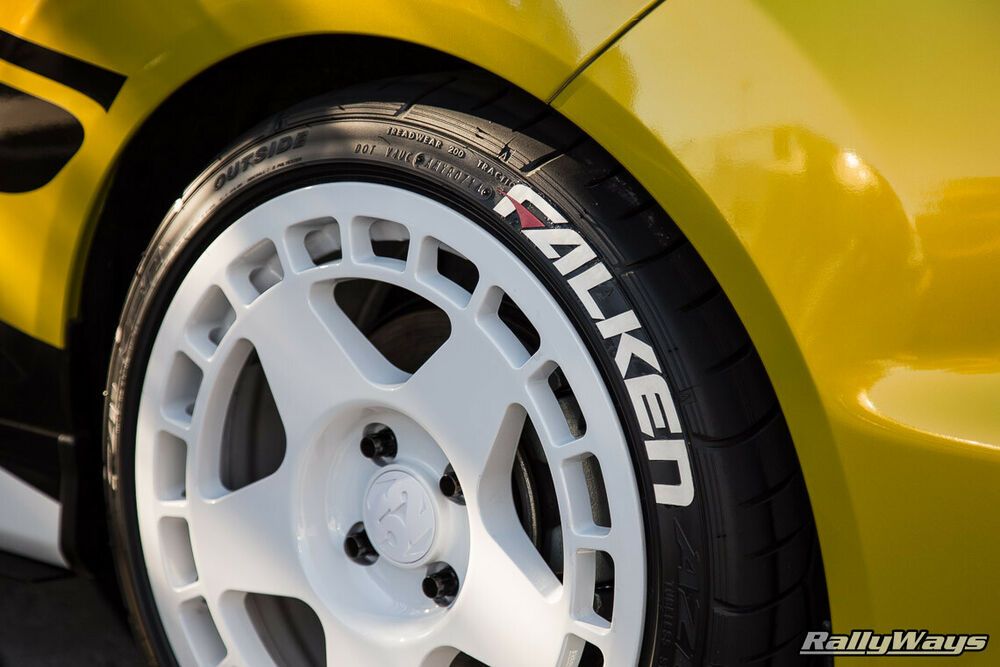
It is possible to purchase a tire iron or lug wrench in a variety of styles, ranging from the typical L-shaped or four-way lug wrench to models that telescope or can be disassembled into a compact tube. For example, the cross-shaped universal lug wrench has four different socket sizes, one on each end, and is the most commonly encountered (or sometimes three with a wedge used to pop off wheel covers and hubcaps). They feature a socket on one end and a wedge on the other, but they are not as popular as straight irons due to their lack of adjustability in the styling department.
PortableWhen not in use, it can be compressed down to 14 inches in height for convenient storage.
For example, one issue with typical 4-way lug wrenches is that they are difficult to stow, which might result in them being misplaced. Newer designs have telescoping, folding, or assembling designs, which make them easier to store away than older designs. It’s possible that you have enough room for your four-way and that you enjoy the leverage you get while removing difficult-to-loosen lug nuts, but with smaller vehicles, storing them in the trunk can be a big consideration.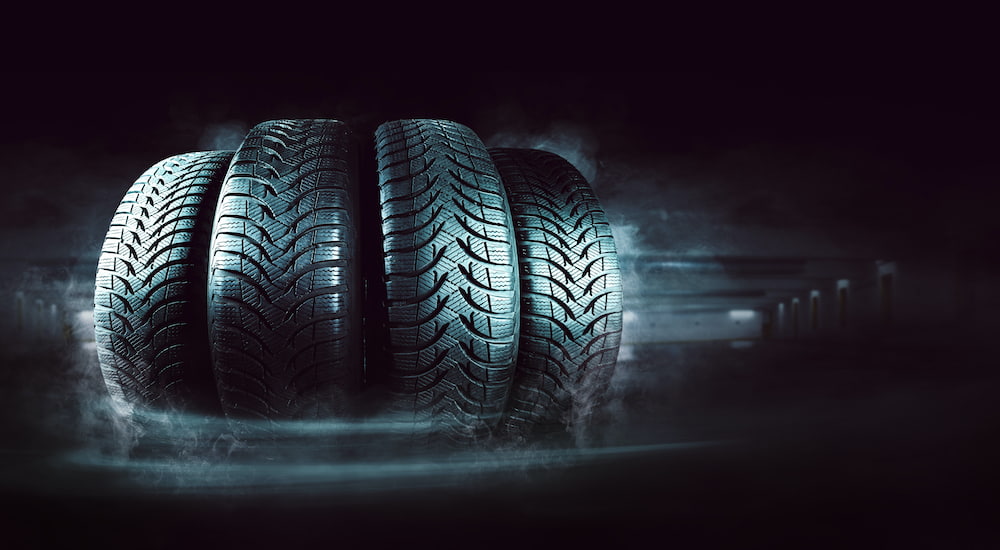
Before making any purchasing selections, examine your requirements, just like you would with any other tool. Most of the time, it is not a good idea to purchase the most costly or least expensive versions that you come across; instead, take into consideration the elements listed above.
New summer wheel tread height for the "mass consumer" ranges from 7.5-8.5 millimeters. So called high-speed tires have a tread in the range of 5-6 mm, and on racing cars (depending on the discipline) - and even within 4.5 mm. Winter tires should have a tread depth - already 10-11 mm, and here the control of the norm, as you you know, much more important than in any other case.
the tread on a winter non-studded tire does not work effectively on slippery coating, increases the risk of snow sticking, weakens the ability of the tire to self-cleaning, which, in turn, leads to a deterioration in the adhesion of the wheel to the road, the longitudinal and transverse hook decreases, and most importantly - increases braking distances.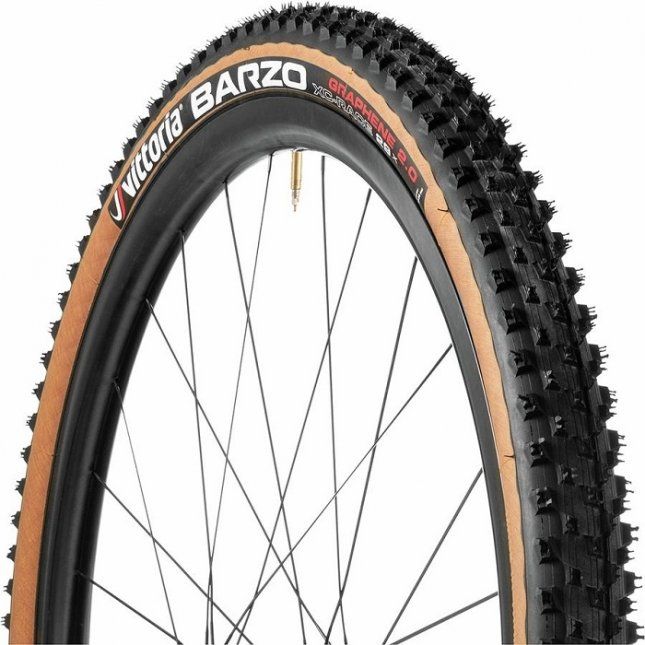
So, for example, with a tread depth 7.5 mm (instead of 10 mm) on a car of the most massive classes "B", "C" and "D" the braking distance increases by 25-30%; and in real terms it is about 12-15 meters. Imagine how can you knock down a car or how many pedestrians should you hit?
Traction force from the power plant (engine + transmission) on the roadway with such a "depth" of the tread falls by 40%, and with a depth of 4 mm - already at 60%. These are the results of official studies, of which the Internet is full today.
This is why tire manufacturers (and cars) DO NOT RECOMMEND (and traffic rules even prohibit) the operation of a wheel with a tread less than 1.6 mm.
Recommendation from an experienced driver: the saddest thing is that “especially economical” motorists, as they say, pull to the last. Like, if there is another 1.7 mm in the center of the wheel, so you can ride.
Impossible!
After all, a winter tire, in addition to central and side drainage channels (where we usually measure this very tread depth), has many more sipes, small slots in the blocks protector.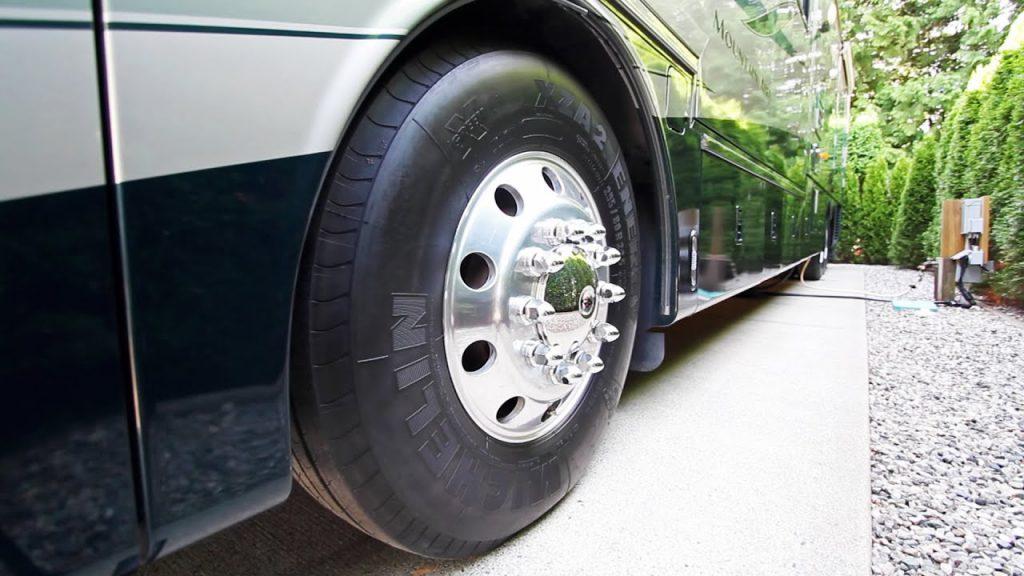 In addition to them, there are also side hooks (and also with lamella slots), which are responsible for the tenacity of winter tires.
In addition to them, there are also side hooks (and also with lamella slots), which are responsible for the tenacity of winter tires.
…and which wear out while driving Firstly!
And we keep measuring depth of central drainage ditch…
Tread depth control different manufacturers define it differently. As a rule, these are partitions ("pimples") in the depth of the central groove of the drainage system. If the height of this partition caught up with the plane of the rest of the surface of the tire, which means the tire - in the trash!
Other manufacturers have indicators not only at the bottom of the central groove, but also on the sidewall, on the very edge of the side hook. And not only with numbers, but also with a special the abbreviation "TWI", and various "triangles", and "ticks", and "wings", or even pictograms of their own company logos.
Also, for example, manufacturers practice a calibrated slot deep into the tire with a designation in numbers. You roll a coin in this slot and you see: where it “rolled out” on surface is the residual depth.
You roll a coin in this slot and you see: where it “rolled out” on surface is the residual depth.
And, of course, we use the retractable "sting" caliper or a special pocket meter, such today sold on every corner. And most of us put the key to the lock in this groove ignition and - "by eye": wow! ... yes here still ride and ride ...
The tread height always fluctuates within 0.5-1.5 mm, not only in one model, but sometimes even in one purchased you party wheels. This "inconsistency" depends on many factors:
Wear indicators tire manufacturers, as a rule, they are not located at the same height as indicated in the "guests" and the rules SDA, but with a small tolerance in b o side, hoping for a “longer” tire efficiency and more water diverted from the spot contact.
But the main thing - in the hope of the image! Again — marketing! Here, as they say in one southern city, “it’s better to sleep than undereat."
Using a Continental wheel as an example Premium Contact 6 (not an advertisement, but a fact) and measure with a special probe "depth gauge", at what height (depth) is the wear indicator in the central sewer channel, we will even see 1.74 mm, and not the 1.6 mm “prescribed” by the Rules.
Why a tire with significant wear? The answer is obvious: because it is ours with you safety! The lower the residual tread height (or depth, if you prefer), the worse the grip and the “better” hydroplaning; that is, the wheel "floats" over road surface at a much lower speed than we expect.
About the "flawed" position of all-season tires we spoke in article on choosing winter tires. And speaking of tread depth for SUCH tires, it should be borne in mind that they are "obliged" to have a minimum depth even not 1.6 mm, but 4 mm. Manufacturers of all-season tires are usually at the bottom of their grooves. products are placed not one, but even 2 (two) indicators - winter and summer.
products are placed not one, but even 2 (two) indicators - winter and summer.
As for summer tires (and especially the so-called wet rain), then as a remark I will add that some manufacturers apply these tires also have other markings that allow you to evaluate efficiency of its work in such conditions as, for example, autumn and rainy weather. This is an image of a droplet at the very junction of the tread and sidewall wheels. "Droplet" during the operation of the tire is corny erased along the way tread wear (and, by the way, together with the tread) to its critical values. The “erased” droplet indicates that after this limit, the tire is “maximum ineffective" begins to divert into the water from the contact patch, and the risk of aquaplaning increases critically!
But this is our life!
Advice from an experienced driver: which case should not be missed here - this is the operation of winter tires in a hot period. If on summer tires (and also shabby) on a winter road, few people would like to ride, then the winter one is often “worn out” already in late spring, and even hot in summer.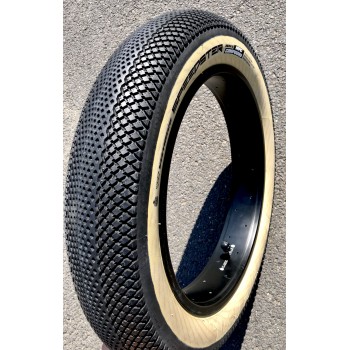 I absolutely do not recommend doing this.
I absolutely do not recommend doing this.
It is not for nothing that car manufacturers and of car tires, it is recommended to change the rubber at the junction of the average daily temperature "in the area" 7-8 degrees Celsius. Below this temperature "redistribution" winter the tire works quite correctly, and at higher temperatures the rubber-rubber mixture does not "work" from the word "absolutely". First, winter tires on hot road surfaces wear out almost three times speed, and secondly, it ... corny "melts". When braking, such a tire literally glides on its own soot, left on the pavement.
Very a very unpleasant sensation when you try to stop on a bare dry ( ! ) pavement, and the car does not even try to slow down.
Who wants to make a nice, useful gift to their friends, and maybe to themselves, then be sure to check out the review of kitchen scales by clicking on this link.
02/22/2018
Despite the objective importance of the spare tire, not all drivers always have it with them. Some do not carry a spare tire out of hope or belief that their tires are invulnerable. Others deliberately take this step, as they stocked up with a special tool in advance, which, if necessary, can eliminate a tire puncture along the way. What else can be used and how to do it right? Let's figure it out.
Some do not carry a spare tire out of hope or belief that their tires are invulnerable. Others deliberately take this step, as they stocked up with a special tool in advance, which, if necessary, can eliminate a tire puncture along the way. What else can be used and how to do it right? Let's figure it out.
Contents of :
Conventionally, all methods for express tire repair can be divided into two categories:
Consider ways to restore a damaged tire on the road. The first three methods are temporary. The latter, with the right approach, allows you to completely restore the tire.
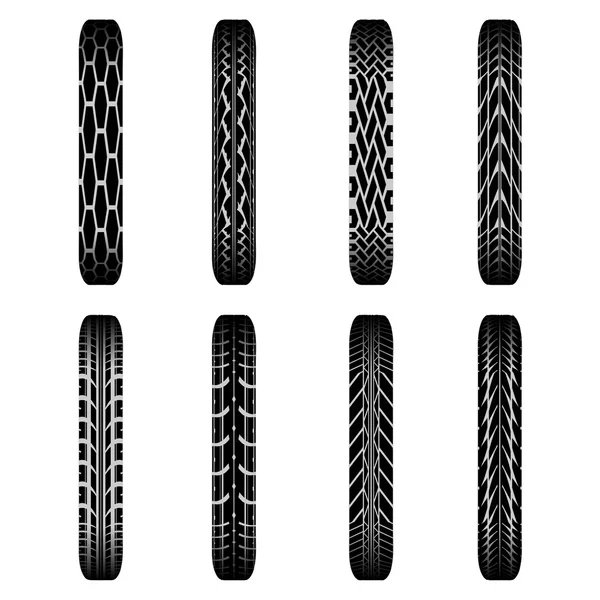 e. preventive). A special sealing compound is pumped into all four undamaged tires. While driving, it is inside the wheel in liquid form. If the tire suddenly loses its tightness, then this composition, leaving together with the air, clogs the slot in a few seconds. This method is relevant if you have a long trip under time constraints.
e. preventive). A special sealing compound is pumped into all four undamaged tires. While driving, it is inside the wheel in liquid form. If the tire suddenly loses its tightness, then this composition, leaving together with the air, clogs the slot in a few seconds. This method is relevant if you have a long trip under time constraints. 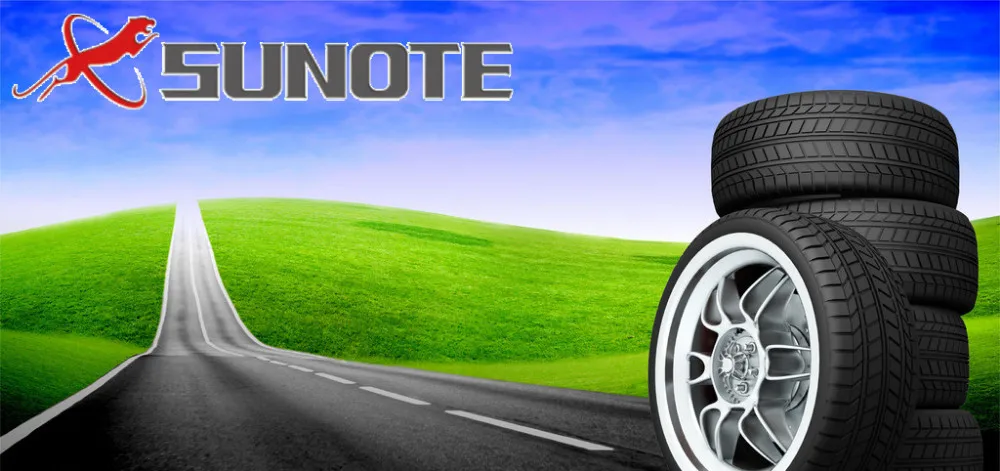
After removing the foreign object, the hole is processed with an awl with abrasive edges: this tool must be inserted into the puncture and cleaned and developed with intensive reciprocating movements several times.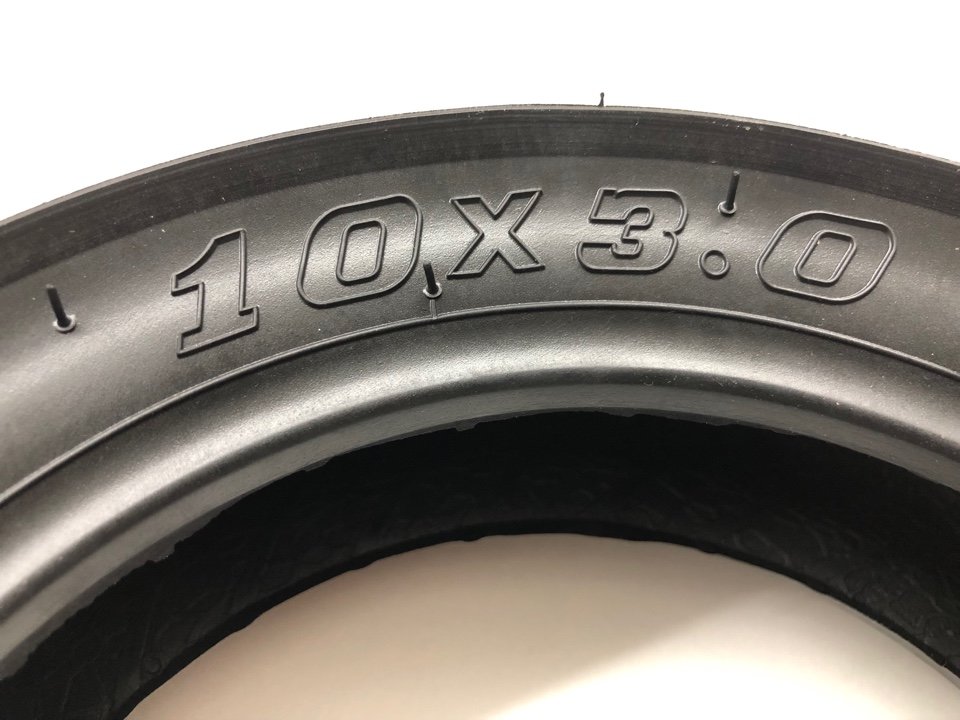 Then the raw rubber tow is removed from the package and inserted into the eye of the second awl so that both ends are the same length. The hole in the tire and the raw rubber is treated with an activator. Next, the awl is inserted into the puncture in such a way that small ends of the tourniquet, about a centimeter long, remain outside. After 5 minutes, the excess remaining on the surface is cut off. This method can also successfully eliminate small side cuts.
Then the raw rubber tow is removed from the package and inserted into the eye of the second awl so that both ends are the same length. The hole in the tire and the raw rubber is treated with an activator. Next, the awl is inserted into the puncture in such a way that small ends of the tourniquet, about a centimeter long, remain outside. After 5 minutes, the excess remaining on the surface is cut off. This method can also successfully eliminate small side cuts.
There is a technique that allows using wire and several bundles of raw rubber to get rid of even extensive side damage to tires. However, it is quite difficult to implement and not every driver will be able to implement it.
Consider a few well-known tools that are most widely used to repair punctures:
 It works in the same way as most sealants: the container is thoroughly shaken, after that a hose is attached, and the contents from the container are completely pumped into the tire. The maximum diameter of the repaired hole is 4.5 mm. This is almost always enough to repair punctures caused by nails and screws.
It works in the same way as most sealants: the container is thoroughly shaken, after that a hose is attached, and the contents from the container are completely pumped into the tire. The maximum diameter of the repaired hole is 4.5 mm. This is almost always enough to repair punctures caused by nails and screws.
